Do your students struggle with understanding how to use the dichotomous key? I can totally relate. When I first started teaching, I thought that this would be a breeze to teach. Boy was I wrong. I just blew through explaining how to use it and expected them to just get it. Rookie mistake! I quickly realized I couldn’t throw them to the wolves and expect them to get it. I needed to give them more guidance and make it more relatable.
Light bulb moment
In my early years of teaching, it was a struggle to find fun, relatable keys that were interesting for the kids. I got so sick of finding the same plant leaf dichotomous key on google that I created my own dichotomous key activity! Once I changed my strategy and started using animals as examples in my keys, they started to learn it much easier. No offense to plant lovers, but most kids aren’t too interested in plants…yet!
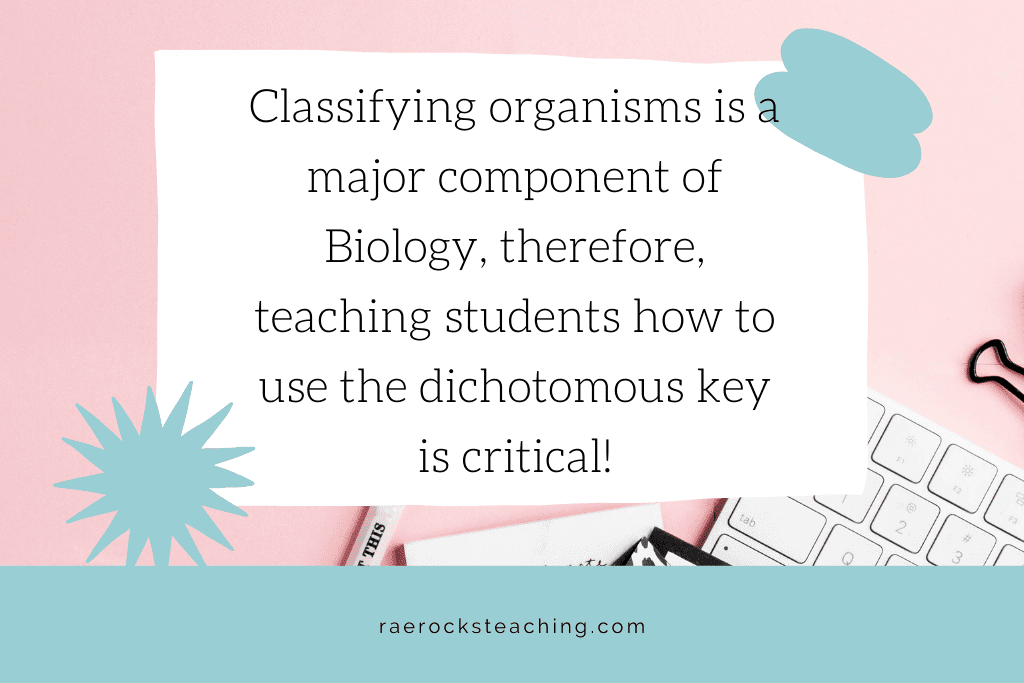
-
Save
Classifying organisms is a major component of Biology, therefore, teaching students how to use the dichotomous key is critical! Especially since new species are being discovered all the time. It’s important to have a system to classify these new organisms. That’s where dichotomous keys come into play.
What is a Dichotomous Key and How Do You Use It
A dichotomous key is defined as a scientific tool that is used to identify an organism based on its visible traits. Dichotomous keys have a series of statements with two choices that will lead the user to the correct identification of the organism.
“Dichotomous” means “divided into two parts”. This is the reason that dichotomous keys always provide two choices in each step. When the user chooses the correct statement, it leads them to the name of the organism.
The purpose of a dichotomous key is to accurately identify the mystery organism.
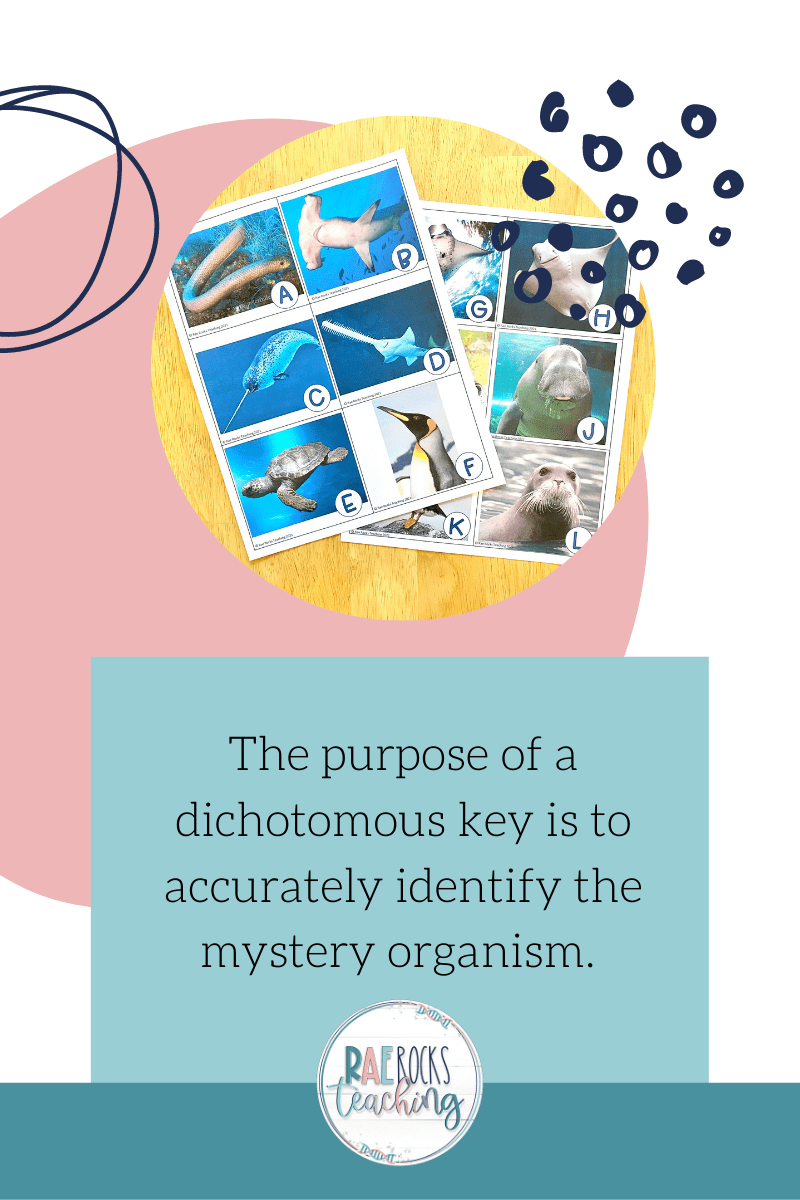
-
Save
How to Use a Dichotomous Key to Identify Organisms
When using a dichotomous key, you start with the first organism you want to identify. You always start with number one on the dichotomous key and determine which of the two characteristics the organism has. Then follow the next step it directs you to. Move onto the next organism once you have identified the scientific name for the first organism. Follow these steps until you have identified all the organisms in question.
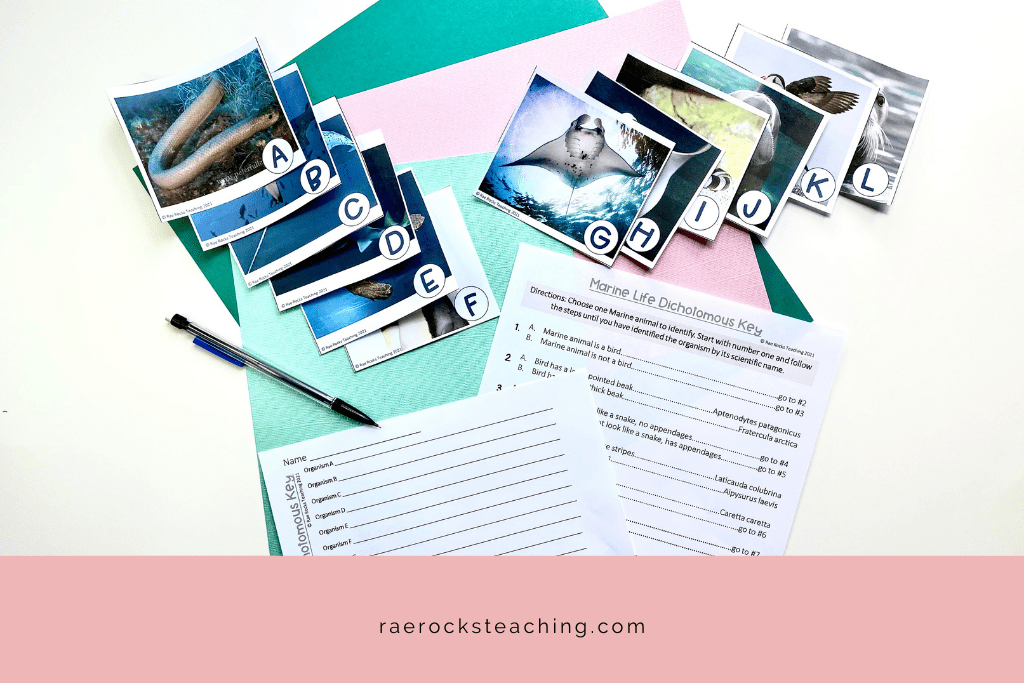
-
Save
For example, let’s say you found a flower on the ground and would like to determine from which plant it came. A choice in the dichotomous key might be something like, “The flower has white petals or has pink petals.” If the answer was “white petals,” then the next choice might be something like, “The flower has a cone-like structure in the center.” Eventually, when enough choices have been made, the identity of the flower is revealed!
How to Make a Dichotomous Key
When making a dichotomous key, using both quantitative (numerical) and qualitative (non-numerical) features should be used. Qualitative features could be how an organism looks, its color, if it has a tail, etc. Quantitative features could include the number of leaves, the length of an organism, how many legs an organism has, etc. There are certain things that should be taken into account when creating a dichotomous key.
Best practices when constructing a dichotomous key…
»Use constant characteristics rather than variable ones.
»Use measurements rather than terms like “large” and “small”.
»Make the choice a positive one – something “is” instead of “is not”.
»If possible, start both choices of a pair with the same word.
»If possible, start different pairs of choices with different words.
»Be as specific as possible!
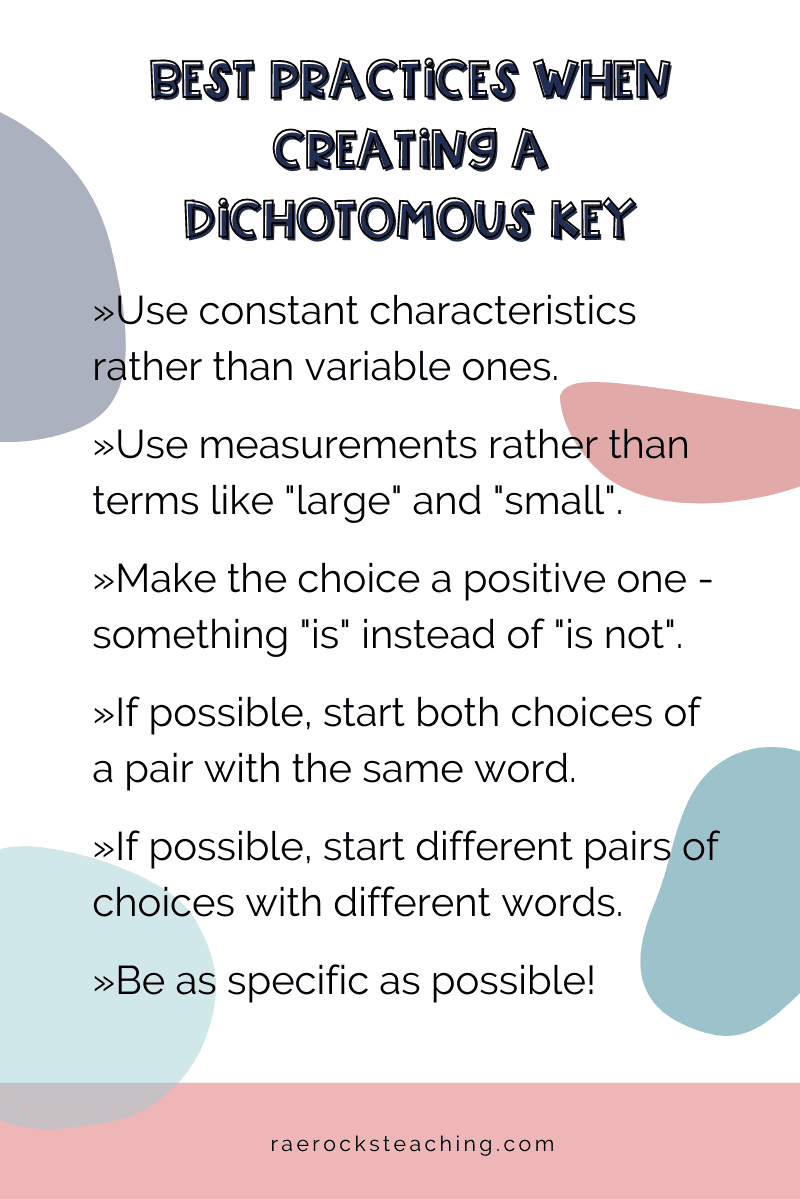
-
Save
Directions:
- When constructing a dichotomous key, you must be aware of the characteristics of the objects you are classifying.
- Discuss some of the distinguishing characteristics that are easily visible on each of your organisms.
- Determine a characteristic that will allow you to clearly classify your organism into two categories.
»This is the first choice in your dichotomous key!
»Write this down on your dichotomous key chart.
- Place the second pile of animal cards off to the side for later use. Continue to classify one group of animals into separate subgroups, using pairs of characteristics, filling in your dichotomous key chart as you go along.
- Once you have classified and separated your first major groups of organisms, do the same with the second major group of organisms, working until you have identified every single organism.
- Use the choices you created on your classification chart to create a dichotomous key with paired statements. Each choice should result in either the next step or the identification of the organism!
How I Implement in my Classroom
Students are often unfamiliar with what a dichotomous key is as well as how to use one to identify organisms. I like to start off by using some simple examples to walk them through it in class together. We start with very basic animals that they already know the name of so they can see how these steps lead us to the name of the organism.
Once students feel comfortable with identifying organisms they already know, we move into organisms that they may be more unfamiliar with. I give them a dichotomous key and pictures of 12 marine animals. I print out the pictures in color and break the students into groups. They work together in groups and work through each organism using the dichotomous key.
Once they think they have correctly identified the organism, they will write it down on their student sheet.
I will go over the answers with them after all groups have finished for some quick, formative feedback. I don’t skip going over the answers, because it is imperative that they know where they went wrong if they made an error.
Pushing Students to Think Deeper
Once I think students have a good understanding of how to use dichotomous keys and their purpose, I like to challenge them to create their own. This is where the true inquiry comes in! However, I do not give them 100% free reign. I assign each group a set of animals, such as horses, pigs, dogs, etc with the animal’s scientific names on the cards. The groups must problem-solve how their group of animals should be separated into groups, then subgroups, etc. until they can start to break them down into key categories. This will usually take students approximately 45 minutes to an hour depending on how quick some of your students “get” it. I have them write their dichotomous key down legibly and turn it in with the answer key.
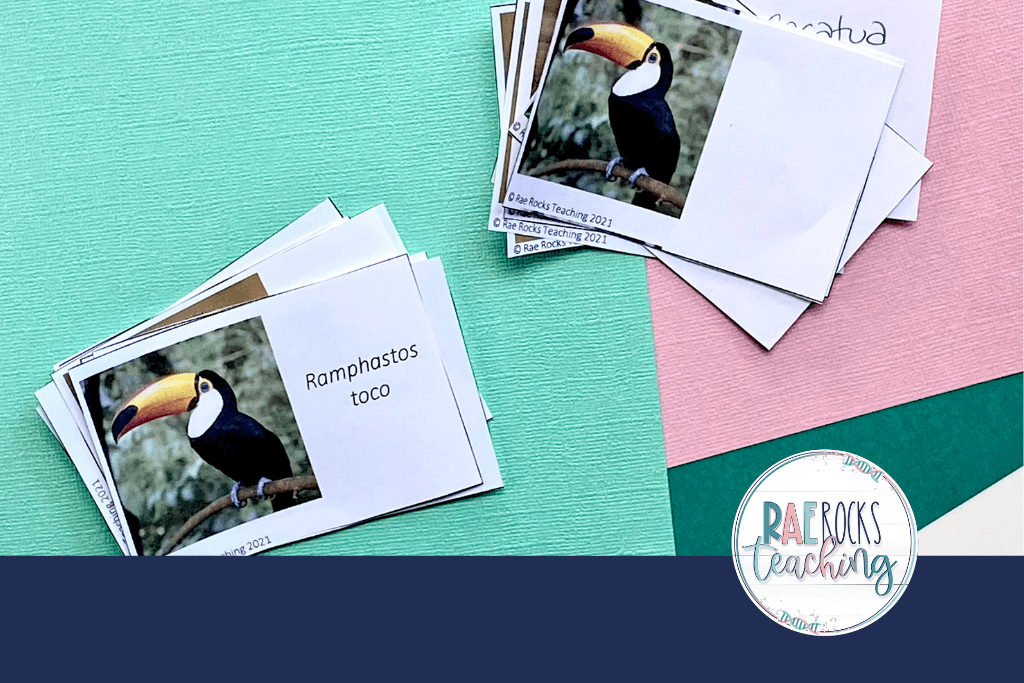
-
Save
The next day, I randomly pass out the animal cards without the scientific names on them along with another group’s dichotomous key that was created the day before. Students work together in groups in an attempt to identify the organisms using each other’s dichotomous key. After checking the answer key, students will evaluate and rate the quality of the group’s paired statements dichotomous key.
Ideas to Differentiate
Differentiating assignments can sometimes be a struggle, especially if you have many levels in your class and are short on time. Because let’s face it, aren’t we all?! When putting students in groups, I usually put high and middle-range students into groups as well as middle and low-range students into groups. I never put high and low students into a group because I have found that the high-level students take over and the low-level students are not confident enough to speak up in the groups sit back letting the others do the assignment.
I have also groups students into high-level learners, middle-level learners, and low-level learners. This gives me an opportunity to check on the high-level learners but can let them go ahead without much intervention. I can also check on the middle-level learners and assist in pushing them if needed. I tend to spend most of my time with low-level learners to help them connect the dots and assist them much more.
Hopefully after you have read this you are feeling way more energized about teaching dichotomous keys to your students. It doesn’t have to be boring and can totally be related to any situation.
I absolutely love sharing with y’all and would love to connect on IG or Facebook. Follow me and send me a DM with what you need more of because I’m here to help!
Short on time and energy?
I got you covered teacher friend! Snag your own copy of this Dichotomous Key Differentiated Activity and save hours of time.
Check out these articles that are sure to give you even more value!
Who Invented the Dichotomous Key?
7 Easy and Effective Strategies to Check for Understanding
5 Exciting and Fun Ways to Practice Vocabulary for Biology

-
Save
Share via:


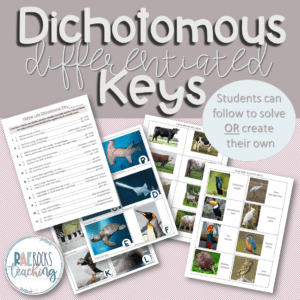







2 Responses